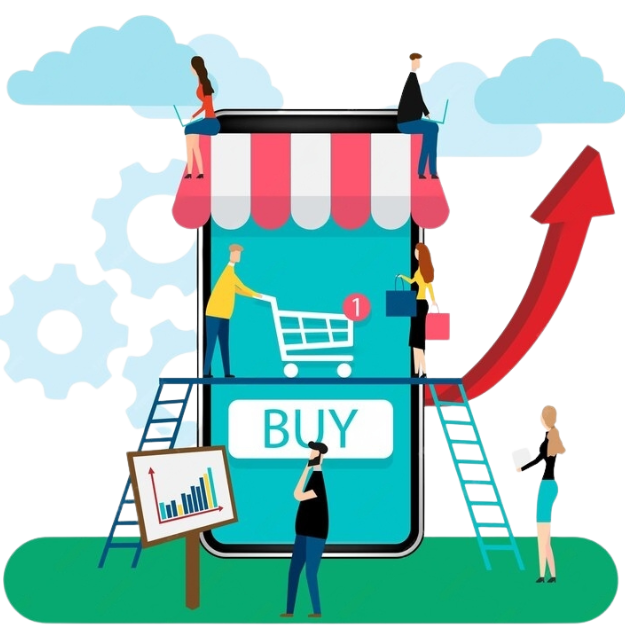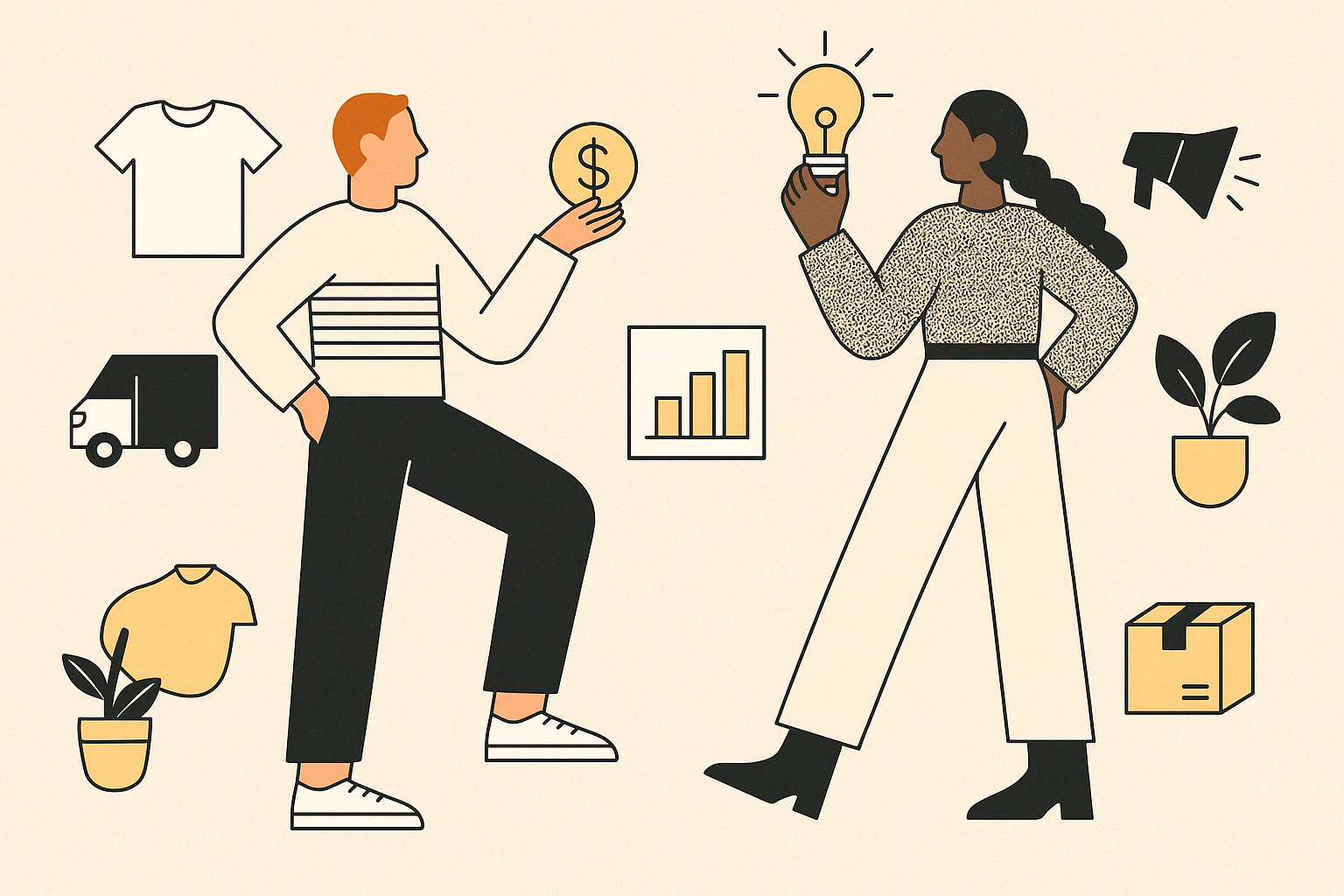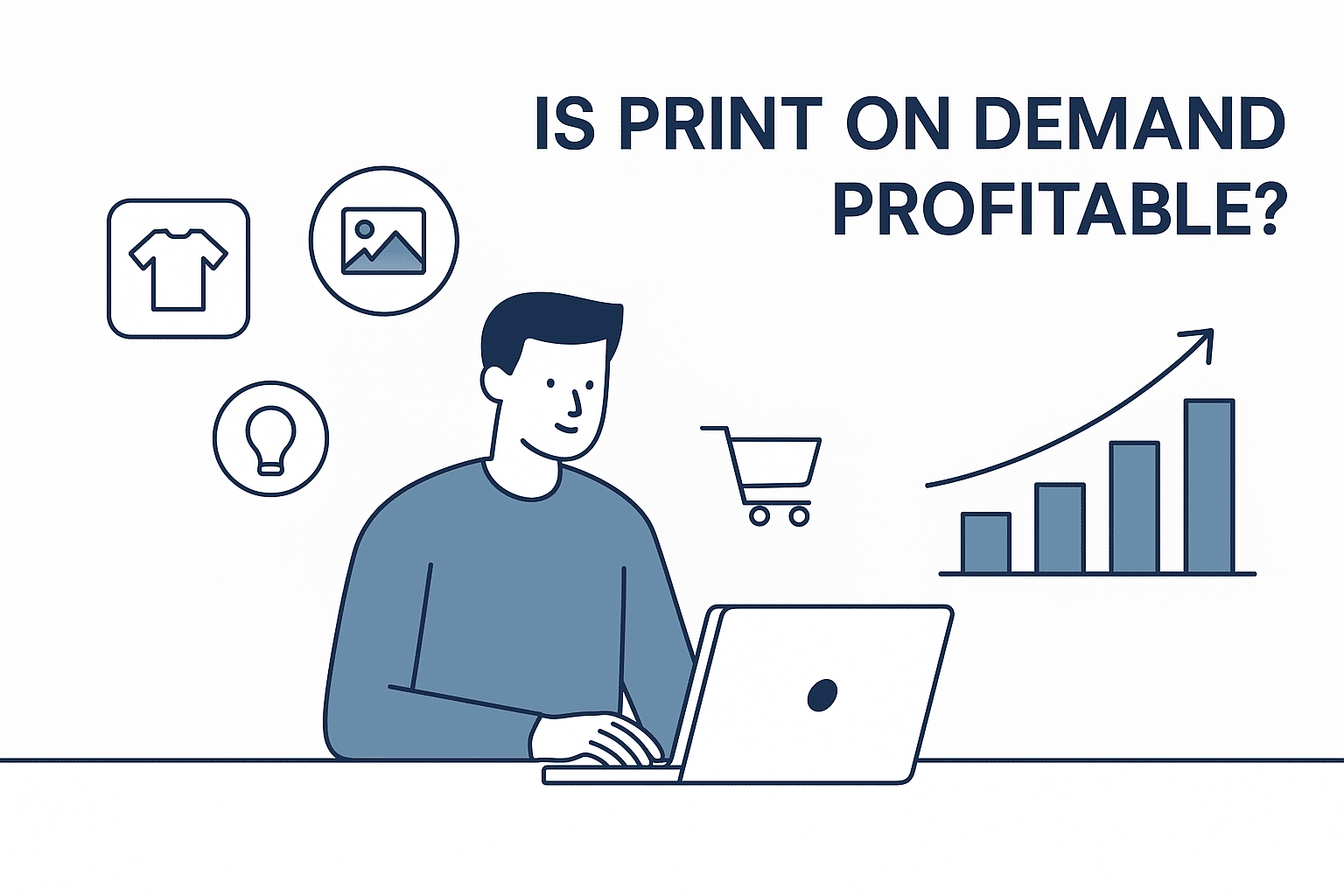Business Models Of Ecommerce-Table of Contents
What Is Ecommerce?
Before exploring the different types of ecommerce business model, it’s important to first establish a clear understanding of what constitutes an ecommerce business. Ecommerce, or electronic commerce, is the practice of buying and selling goods and services using the internet. It has transformed the traditional way of doing business by enabling transactions to be carried out online. This method covers a wide range of activities, from ordering products from online retailers to downloading digital content. Ecommerce is highly convenient, as it allows consumers to shop from anywhere at any time, using devices like computers, tablets, or smartphones.
One of the key features of ecommerce is its accessibility. Customers can browse a vast selection of products and services, compare prices, and make purchases without the need to physically visit a store. This digital approach to commerce not only saves time but also offers a level of flexibility and choice that traditional brick-and-mortar stores can’t match. For businesses, ecommerce opens up opportunities to reach a wider audience, transcending geographical boundaries. It’s a cost-effective way for businesses to expand their market presence and customer base without the significant overhead costs of maintaining physical stores.
What Is Ecommerce Business Model?
Every company operates based on its own business model, which is a plan for how it will run its business and make money. This model includes what the company will sell, who its customers are, and how it plans to generate profits. Choosing the right business model is crucial, especially for beginners or those new to the business world. The right model depends on the type of business, the target market, and the specific goals of the company.
Successfully executing a business model is key to making a business venture profitable. It’s not just about having a great idea; it’s about having a solid strategy to make that idea work financially. This involves understanding the market, knowing the customer needs, and adapting to changes over time. A well-executed business model can turn a business venture into a steady source of income and drive long-term success.
Different Types Of Ecommerce Business
1.Ecommerce Business Model-Business to Consumer (B2C)
A B2C (Business-to-Consumer) business model refers to companies that sell products or services directly to individual consumers. This model involves businesses interacting directly with end-users who are the purchasers of goods or services for personal use, not for resale.
Examples of B2C Ecommerce Business Model- Amazon -Amazon sells a wide range of products directly to consumers, including electronics, books, clothing, and more. Consumers visit the Amazon website, browse products, and make purchases that are shipped directly to their homes.
- Netflix – Netflix offers a subscription-based service where consumers pay a monthly fee to access a vast library of movies, TV shows, and original content. Customers can stream content directly to their devices, providing convenience and a wide range of entertainment options.
2.Ecommerce business model-Business to Business (B2B)
In the Business-to-Business (B2B) ecommerce model, companies sell products or services to other companies. This means that businesses are the buyers instead of individual consumers. For example, a manufacturer might sell goods to a wholesaler, or a wholesaler might sell products to a retailer.
The key points of the B2B model are:- Transactions happen between businesses.
- One business sells to another business, not directly to consumers.
- It involves strategic relationships, such as manufacturers selling to wholesalers or wholesalers selling to retailers.
- Alibaba:Alibaba is a platform where manufacturers and wholesale suppliers sell products in bulk to other businesses. Retailers and other businesses use Alibaba to source large quantities of products at competitive prices, which they then resell to consumers.
- Salesforce:Salesforce provides cloud-based customer relationship management (CRM) software to other businesses. Companies use Salesforce’s software to manage their customer data, sales processes, and marketing efforts, streamlining their business operations and improving efficiency.
3.Ecommerce Business Model-Business to Government (B2G)
In the Business-to-Government (B2G) ecommerce model, businesses sell products, services, or information to government agencies. This can include working with federal, state, or local governments. These transactions are designed to meet the unique needs of government bodies, often involving contracts to supply goods or provide services.
Example of B2G Ecommerce Business model- IT Services: A tech company providing cybersecurity solutions to a government agency.
- Office Supplies: A business supplying office furniture and equipment to a city government.
4.Ecommerce Business Model-Business to Business to Consumer (B2B2C)
The Business to Business to Consumer (B2B2C) ecommerce model is when a company sells products or services to other businesses, and those businesses then sell the same products or services to individual consumers. This means the company works in two markets at the same time: business-to-business (B2B) and business-to-consumer (B2C).
Example of B2B2C Ecommerce Business Model- Food and Beverage Industry: A coffee roaster supplies premium coffee beans to local cafes (B2B), which use the beans to serve coffee to their customers. At the same time, the coffee roaster also sells packaged coffee beans directly to individual consumers through their online store or retail locations (B2C).
- Technology and Software: A software company develops a productivity app and sells licenses to corporations (B2B), which distribute the app to their employees for work purposes. The same software company also sells individual subscriptions directly to consumers who want to use the app for personal productivity (B2C).
5.Ecommerce Business Model-Consumer to Consumer (C2C)
In the Consumer to Consumer (C2C) ecommerce model, individual people sell products or services to each other. Instead of businesses selling to consumers, regular people use online platforms or apps to buy and sell directly with one another.
Examples of C2C Ecommerce Business Model- eBay: eBay is an online marketplace where individuals can sell items they no longer need, such as electronics, clothing, and collectibles, directly to other consumers. Buyers can bid on items or purchase them outright.
- Etsy: Etsy is a platform where individuals can sell handmade crafts, vintage items, and unique goods directly to other consumers. Sellers create their own online shops to showcase and sell their products to buyers looking for one-of-a-kind items.
6.Ecommerce Business Model-Consumer to Business (C2B)
The Consumer to Business (C2B) business model is where individuals (consumers) offer products or services to businesses. In this model, the roles are reversed compared to traditional business models: instead of businesses selling to consumers, consumers sell to businesses.
Example of C2B Ecommerce Business Model- Freelance Platforms: Individuals offer their freelance services, such as writing, graphic design, or programming, to businesses looking to hire talent for specific projects. Eg-Upwork.
- Review Sites: : Consumers provide reviews and feedback about businesses. Companies use this information to improve their services and attract more customers. Eg- Yelp.
7.Ecommerce Business Model-Consumer to government (C2G)
The Consumer to Government (C2G) model is where individuals interact with government services online. In this model, people can provide feedback to government agencies, participate in elections and voting, and manage and pay taxes. It creates a direct and efficient way for individuals to communicate and interact with government authorities using digital platforms..
Example of C2G Ecommerce Business Model- Online Tax Filing: Individuals can use government websites or authorized online platforms to file their taxes, make payments, and manage their tax information directly with the tax authorities.
- Electronic Voting: Citizens can participate in elections by casting their votes online through secure government portals, making the voting process more accessible and efficient.
8.Ecommerce Business Model-Government to Consumer (G2C)
The Government to Consumer (G2C) model refers to the interaction between government and individual citizens through digital means. This model facilitates the delivery of public services, information, and communication directly from government entities to the public.
Examples of G2C Ecommerce Business Model- Online Services Portals: Governments provide websites where citizens can access various services, such as renewing driver’s licenses, applying for permits, and accessing public records.
- E-Government Services: Citizens can use online platforms to access services like social security benefits, healthcare information, and unemployment benefits, making it easier to receive and manage government services.
9.Ecommerce Business Model-Government to Government (G2G)
The Government to Government (G2G) model refers to the interactions and exchanges between different government entities, departments, or agencies. This model focuses on improving communication, collaboration, and the sharing of information and resources between various governmental bodies.
Example of G2G Ecommerce Business Model- Data Sharing Platforms: Government departments use shared digital platforms to exchange data and information securely. For example, health departments and social services agencies may share data to coordinate public health initiatives.
- Interagency Collaboration: Different government agencies collaborate on joint projects or initiatives, such as disaster response and emergency management, where federal, state, and local agencies work together to plan and execute response efforts.
10.Ecommerce Business Model-Government to Business (G2B)
The Government to Business (G2B) model refers to the interactions and transactions between government entities and businesses. This model involves the use of digital platforms to streamline processes, enhance communication, and improve the delivery of services and information from the government to businesses.
Example of G2B Ecommerce Business Model- Online Business Licensing and Permits: Businesses can apply for, renew, and manage their licenses and permits through government portals, making the process more efficient and reducing paperwork.
- E-Procurement Systems: Governments use digital platforms to manage procurement processes, allowing businesses to bid for government contracts online. This includes submitting proposals, receiving notifications of opportunities, and handling procurement-related documentation electronically.
Delivery Methods of Ecommerce Business Model
Now, let’s dive into the various delivery methods utilized by ecommerce businesses to connect products with customers:
- Direct Shipping: The seller ships the products directly to the customer. This is common in traditional retail and some online stores.
- Dropshipping: The seller doesn’t keep products in stock. Instead, when an order is placed, the seller purchases the item from a third party, who then ships it directly to the customer.
- Third-Party Fulfillment: The seller stores their products in a third-party warehouse. When an order is placed, the warehouse handles the packing and shipping of the products.
- Digital Delivery: For digital products like software, e-books, or online courses, delivery is done electronically via download links or email.
- Click and Collect: Customers purchase products online and pick them up at a physical store or designated locat ion.
Choosing the Right Ecommerce Business Model
Selecting the ideal eCommerce business model requires careful consideration of several factors. Here’s a guide to help you craft a business plan that will distinguish your company:
1.Define Your Product Offering
Understanding what you plan to sell is crucial for your eCommerce venture.
Physical Products
Selling physical products remains the most prevalent type of eCommerce. From car parts to books to electronics, having a clear product in mind will facilitate market entry.
Digital Goods
The digital marketplace has made selling digital goods easier than ever. You can sell anything from eBooks to digital designs, provided you respect intellectual property rights. The scalability of digital goods offers significant advantages.
Services
The online environment has simplified the sale of services. What once relied on newspaper ads or word-of-mouth can now thrive on personal websites and marketplaces like Facebook Marketplace, Etsy, and Amazon. This broadens the reach for service-based businesses.
2.Identify Your Target Audience
Understanding your customers is key to success. Consider their expectations and behaviors to find ways to improve their experience or save them money. Identify pain points in the current market to innovate and enhance customer satisfaction.
3.Assess Your Capabilities
Focus on your strengths and what energizes you. Be realistic about what tasks you can handle independently and where you might need assistance. Recognizing your limitations will help you make better long-term decisions.
4.Align the Model with Your Product
Different products may require different business models. For instance, if you’re manufacturing your products, consider wholesaling or subscription models to cover production costs quickly. If you’re distributing other people’s products, direct marketing and customer acquisition will be crucial.
5.Position Your Brand
Make it clear why your product is the best choice. Evaluate your competition and ensure your unique value proposition stands out. Whether you compete on price, selection, or convenience, your unique advantage should be evident in your operations, marketing, and overall customer experience.
Why Start Ecommerce Business in 2025?
Ecommerce is thriving and growing—and it’s not too late to be part of it. According to Morgan Stanley, ecommerce makes up 22% of sales ($3.3 trillion) and is likely to reach $5.4 trillion by 2026
- Earn money without constant work
- Set your own flexible schedule
- Be your own boss
- Work from anywhere with an internet connection
- Potential for rapid growth as more people shop online
- Opportunity to expand into different products or categories
- Support from websites like Amazon with tools and access to a vast customer base
Selling on websites like Fathershops are here to support your growth with tools, services, and the ability to reach millions of shoppers worldwide.
Read More
- Follow this Complete SEO Checklist to Boost Your eCommerce Store
- Learn How to Build an SEO-Optimized eCommerce Website
- Enhance Your SEO with Smart Social Media Marketing Strategies
- Discover Proven Ways to Increase Your eCommerce Sales
- Master the Go-to-Market Strategy for Your eCommerce Success
- Step-by-Step Guide to Start Your Own eCommerce Business
- Find the Best eCommerce Platforms for Your Business
- Understand the Dropshipping Business Model and Its Benefits
- Explore Different eCommerce Business Models for Success
- Why a Good Website Title Is Crucial for SEO
Start eCommerce Business With Fathershops?
Following are the easy steps to build ecommerce business at Fathershops ecommerce platform:
- Visit the Website: Go to accounts.fathershops.com.
- Create an Account: Provide your name, email, and create a secure password.
- Choose Your Plan: Select a pricing plan that fits your business needs.
- Register Your Domain: Choose and purchase a domain name for your store.
- Pick a Theme:Select a website theme that matches your brand.
- Import Products from Fatherstock:
- Contact Fatherstock: Get product data access (feeds, spreadsheets, or APIs).
- Import Products: Upload product info, images, and pricing to your store.
- Organize and Customize: Arrange products into categories and optimize listings.
- Set Pricing and Inventory: Adjust prices and sync inventory levels with Fatherstock.
Ecommerce Business Model FAQs
What is the role of the business model of ecommerce
in starting an online business?
The business model of ecommerce defines how you will operate your online business, including the types of transactions and customers you’ll serve. For example, a Business-to-Consumer (B2C) model like Amazon focuses on selling directly to individual consumers.
Can you provide examples of different types of ecommerce businesses and their models?
Certainly! One example is Amazon, which follows a B2C model. Another is Alibaba, which operates as a Business-to-Business (B2B) platform, connecting businesses for wholesale transactions.
What are the categories of ecommerce businesses, and how do they differ in their business models?
Ecommerce businesses can be categorized into B2C, B2B, Consumer-to-Consumer (C2C), and more. Each category has its own unique model. For instance, C2C platforms like eBay enable individuals to buy and sell products to each other.
How does choosing the right model impact my ecommerce business?
Selecting the appropriate model is crucial as it determines your target audience, pricing strategy, and overall business approach. For instance, a B2B ecommerce model may involve negotiations with other businesses for bulk purchases.
What are the different types of ecommerce transactions, and how do they relate to the business model?
Ecommerce transactions can include selling physical products, digital downloads, services, and subscriptions. The chosen business model dictates which of these transaction types you’ll engage in. For example, a subscription-based ecommerce model offers regular service deliveries.



 Easy Store Setup
Easy Store Setup




